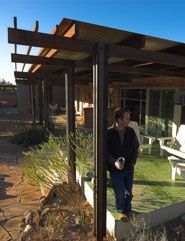Minow: Tell us about the new Digital Copyright Slider. How does it work and what is its purpose?
Brewer: The “Is it Covered by Copyright?” Slider was created as the first in a series of simple tools to help librarians, educators and others with their copyright questions.We first created a print version as a slide chart, but realized that a digital version could be much more useful, though perhaps not as fun to play with. Thus, the digital version was born.Both versions of the slider help the user to determine whether or not a work is in the public domain in the United States , and, if not, what the period of protection is.
Our next tool, a Section 108 “spinner” (library/archival reproductions for preservation, replacement or for users) will be released shortly both in print and online, so stay tuned.
Minow: What is the American Library Association Office for Information Technology Policy Copyright Committee?
Brewer: The American Library Association Office for Information Technology Policy Copyright Advisory Subcommittee promotes copyright education programs and initiatives and advises the OITP copyright specialist. We meet twice a year at ALA annual and mid-winter. Our meetings are open to any interested ALA members.Many members are actively involved in the Copyright Advisory Network at http://www.librarycopyright.net/
 Michael Brewer is Team Leader for Undergraduate Services, University of Arizona Library and a member of the American Library Association Office for Information Technology Policy Copyright Advisory Subcommittee.
Michael Brewer is Team Leader for Undergraduate Services, University of Arizona Library and a member of the American Library Association Office for Information Technology Policy Copyright Advisory Subcommittee.
